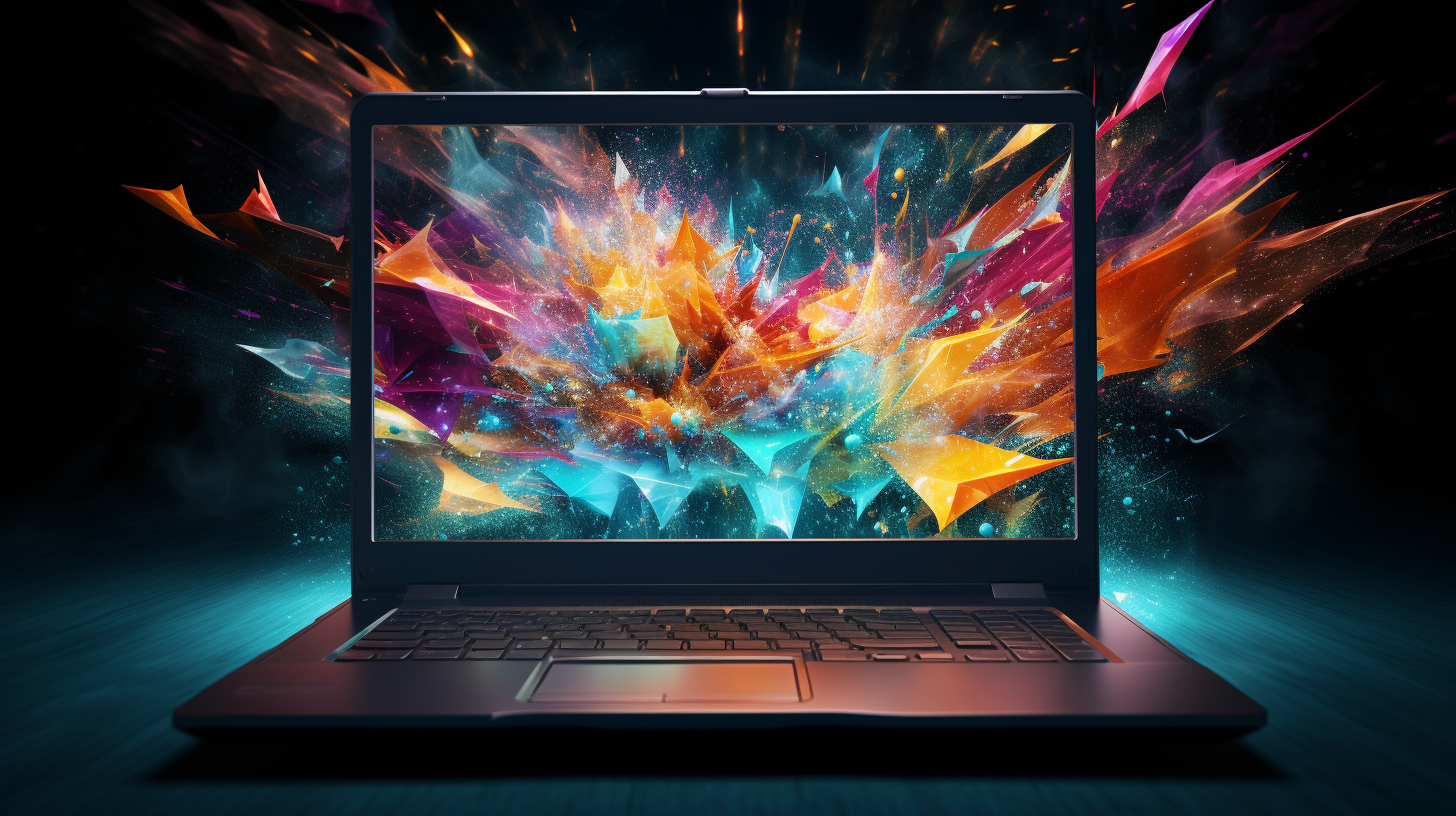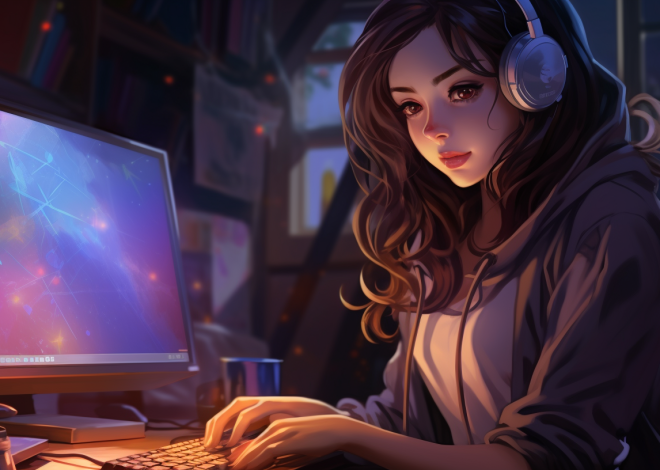
JavaScript and 3D Graphics with WebGL
WebGL stands as a powerful JavaScript API that exposes the capabilities of the graphics processing unit (GPU) within a web browser. It enables the rendering of 2D and 3D graphics, using the underlying OpenGL ES 2.0 specification, making it an important tool for developers seeking to create visually compelling web applications.
At its core, WebGL operates through a state machine model, where each operation modifies the current rendering state. Understanding this state machine is essential for managing the flow of rendering operations effectively. The rendering process typically begins with the creation of a WebGL context from an HTML canvas element, which serves as the surface for rendering graphics.
const canvas = document.getElementById('canvas');
const gl = canvas.getContext('webgl');
Once the context is obtained, developers can set up the viewport, clear color, and enable depth testing, which are foundational settings in WebGL. The viewport defines the drawable region of the canvas, while the clear color establishes the background color for clearing the buffer.
gl.viewport(0, 0, canvas.width, canvas.height); gl.clearColor(0.0, 0.0, 0.0, 1.0); // Set clear color to black gl.clear(gl.COLOR_BUFFER_BIT | gl.DEPTH_BUFFER_BIT); // Clear the canvas
Shaders are pivotal in WebGL, as they dictate how vertices and pixels are processed. The two main types of shaders in WebGL are vertex shaders and fragment shaders. A vertex shader processes each vertex’s attributes, while a fragment shader computes the color and other attributes of each pixel. Writing these shaders requires GLSL (OpenGL Shading Language), which is similar to C in syntax.
const vertexShaderSource = `
// Vertex Shader
attribute vec4 a_Position;
void main() {
gl_Position = a_Position;
}`;
const fragmentShaderSource = `
// Fragment Shader
precision mediump float;
void main() {
gl_FragColor = vec4(1.0, 0.0, 0.0, 1.0); // Red color
}`;
To utilize these shaders, they must be compiled and linked into a WebGL program. This step is important, as the program is what actually runs on the GPU, executing the rendering pipeline.
const vertexShader = gl.createShader(gl.VERTEX_SHADER); gl.shaderSource(vertexShader, vertexShaderSource); gl.compileShader(vertexShader); const fragmentShader = gl.createShader(gl.FRAGMENT_SHADER); gl.shaderSource(fragmentShader, fragmentShaderSource); gl.compileShader(fragmentShader); const shaderProgram = gl.createProgram(); gl.attachShader(shaderProgram, vertexShader); gl.attachShader(shaderProgram, fragmentShader); gl.linkProgram(shaderProgram);
Once the shaders are linked into a program, the next step is to create buffers to hold the vertex data. This data is what defines the shapes to be rendered in 3D space. Buffers are crucial as they allow for efficient storage and access by the GPU.
const vertices = new Float32Array([
-0.5, -0.5,
0.5, -0.5,
0.0, 0.5
]);
const vertexBuffer = gl.createBuffer();
gl.bindBuffer(gl.ARRAY_BUFFER, vertexBuffer);
gl.bufferData(gl.ARRAY_BUFFER, vertices, gl.STATIC_DRAW);
Finally, to draw the shapes, the program must be used, and the appropriate buffer must be bound and configured. In this rendering phase, WebGL draws the specified objects, using the defined shaders to produce the final image displayed on the canvas.
gl.useProgram(shaderProgram); gl.bindBuffer(gl.ARRAY_BUFFER, vertexBuffer); const a_Position = gl.getAttribLocation(shaderProgram, 'a_Position'); gl.vertexAttribPointer(a_Position, 2, gl.FLOAT, false, 0, 0); gl.enableVertexAttribArray(a_Position); gl.drawArrays(gl.TRIANGLES, 0, 3);
In essence, WebGL empowers developers to engage with advanced 3D graphics directly from the web, bridging the gap between complex rendering techniques and user-friendly interfaces. Understanding these foundational concepts is paramount for anyone looking to harness the full potential of 3D graphics in the browser.
Setting Up Your Environment for WebGL Development
Setting up your environment for WebGL development involves a few essential steps to ensure you can effectively create, test, and optimize your 3D graphics applications. The first step is to ensure you have a modern web browser that supports WebGL. Browsers like Google Chrome, Mozilla Firefox, and Microsoft Edge provide robust support for the WebGL API. It’s also beneficial to keep your graphics drivers up to date, as these can significantly impact performance and compatibility.
Next, you will need a code editor to write your JavaScript and HTML. Popular choices include Visual Studio Code, Sublime Text, or any editor that supports JavaScript syntax highlighting. You’ll also want to set up a local server to serve your files, as most browsers block certain features when using the `file://` protocol. You can quickly set up a local development environment using tools like Live Server for Visual Studio Code, or by using simple Python HTTP servers.
# Python 3.x python -m http.server 8000
With your environment established, you can create an HTML file that includes a canvas element and links to your JavaScript files. This canvas will be the rendering surface for your WebGL context. It’s a good idea to set dimensions for the canvas to ensure your graphics render correctly on the page.
WebGL Setup
In your JavaScript file (app.js), you can initialize the WebGL context as described earlier. It is also prudent to create utility functions to handle shader compilation and buffer management. This modular approach not only keeps your code organized but also makes it easier to debug and maintain.
function initShaders(gl, vertexShaderSource, fragmentShaderSource) {
const vertexShader = gl.createShader(gl.VERTEX_SHADER);
gl.shaderSource(vertexShader, vertexShaderSource);
gl.compileShader(vertexShader);
const fragmentShader = gl.createShader(gl.FRAGMENT_SHADER);
gl.shaderSource(fragmentShader, fragmentShaderSource);
gl.compileShader(fragmentShader);
const shaderProgram = gl.createProgram();
gl.attachShader(shaderProgram, vertexShader);
gl.attachShader(shaderProgram, fragmentShader);
gl.linkProgram(shaderProgram);
return shaderProgram;
}
// Usage
const shaderProgram = initShaders(gl, vertexShaderSource, fragmentShaderSource);
Additionally, WebGL debugging can be challenging, particularly for beginners. Using tools like the WebGL Inspector or the WebGL Debugger extension for Chrome can help diagnose rendering issues and ensure that your shaders are compiling correctly. Moreover, the browser’s developer tools provide valuable insights into performance and resource use.
Once you have your files organized and your local server running, you can open your HTML file in the browser. If everything is set correctly, you should see your 3D shapes rendered on the canvas. If issues arise, check the console for error messages related to shader compilation or WebGL context creation, as these will guide you in troubleshooting your code.
Setting up your environment for WebGL development is simpler but demands attention to detail. From ensuring browser compatibility to organizing your code and using debugging tools, each step contributes to a smoother development experience and allows you to focus on creating stunning 3D graphics in JavaScript.
Basics of 3D Rendering: From Shapes to Textures
Rendering in 3D with WebGL involves more than just drawing shapes; it’s about creating the illusion of depth and realism through various techniques. This section will delve into the fundamental concepts of 3D rendering, primarily focusing on the basic building blocks: shapes and textures.
At the heart of 3D graphics are geometric primitives such as points, lines, and triangles. In WebGL, triangles are the most common form used to compose complex shapes because they always lie on a single plane. To render a 3D object, you first define its shape using vertices, which are points in 3D space.
Here’s how you can define a cube using vertex data:
const cubeVertices = new Float32Array([
// Front face
-1.0, -1.0, 1.0,
1.0, -1.0, 1.0,
1.0, 1.0, 1.0,
-1.0, 1.0, 1.0,
// Back face
-1.0, -1.0, -1.0,
-1.0, 1.0, -1.0,
1.0, 1.0, -1.0,
1.0, -1.0, -1.0,
// Top face
-1.0, 1.0, -1.0,
-1.0, 1.0, 1.0,
1.0, 1.0, 1.0,
1.0, 1.0, -1.0,
// Bottom face
-1.0, -1.0, -1.0,
1.0, -1.0, -1.0,
1.0, -1.0, 1.0,
-1.0, -1.0, 1.0,
// Right face
1.0, -1.0, -1.0,
1.0, 1.0, -1.0,
1.0, 1.0, 1.0,
1.0, -1.0, 1.0,
// Left face
-1.0, -1.0, -1.0,
-1.0, -1.0, 1.0,
-1.0, 1.0, 1.0,
-1.0, 1.0, -1.0
]);
Next, you need to specify the order in which these vertices should be connected to form triangles. That is done using index buffers:
const cubeIndices = new Uint16Array([
0, 1, 2, 0, 2, 3, // Front face
4, 5, 6, 4, 6, 7, // Back face
8, 9, 10, 8, 10, 11, // Top face
12, 13, 14, 12, 14, 15, // Bottom face
16, 17, 18, 16, 18, 19, // Right face
20, 21, 22, 20, 22, 23 // Left face
]);
Having established the vertices and indices for our cube, we must now create the appropriate buffers to store this data in WebGL.
const cubeVertexBuffer = gl.createBuffer(); gl.bindBuffer(gl.ARRAY_BUFFER, cubeVertexBuffer); gl.bufferData(gl.ARRAY_BUFFER, cubeVertices, gl.STATIC_DRAW); const cubeIndexBuffer = gl.createBuffer(); gl.bindBuffer(gl.ELEMENT_ARRAY_BUFFER, cubeIndexBuffer); gl.bufferData(gl.ELEMENT_ARRAY_BUFFER, cubeIndices, gl.STATIC_DRAW);
The rendering of these shapes does not end here. Texturing is another crucial aspect that enhances the visual charm of the rendered objects. Textures can be applied to 3D models to provide detail without increasing the geometric complexity. A texture is essentially a 2D image mapped onto the surface of a 3D shape.
To use textures in WebGL, you first need to create a texture object and configure it. Here’s a snippet demonstrating texture loading and configuration:
const texture = gl.createTexture();
gl.bindTexture(gl.TEXTURE_2D, texture);
// Fill the texture with a 1x1 pixel placeholder
const level = 0;
const internalFormat = gl.RGBA;
const width = 1;
const height = 1;
const border = 0;
const srcFormat = gl.RGBA;
const srcType = gl.UNSIGNED_BYTE;
const pixel = new Uint8Array([255, 0, 0, 255]); // Red
gl.texImage2D(gl.TEXTURE_2D, level, internalFormat, width, height, border, srcFormat, srcType, pixel);
// Load an image
const image = new Image();
image.onload = function() {
gl.bindTexture(gl.TEXTURE_2D, texture);
gl.texImage2D(gl.TEXTURE_2D, level, internalFormat, srcFormat, srcType, image);
gl.generateMipmap(gl.TEXTURE_2D);
};
image.src = 'path/to/your/texture.png';
Finally, to incorporate the texture during the rendering phase, you need to bind the texture before drawing your shapes. This requires enabling texture coordinates in your vertex shader and passing them to the fragment shader to fetch the relevant texel:
const texCoordBuffer = gl.createBuffer();
gl.bindBuffer(gl.ARRAY_BUFFER, texCoordBuffer);
const texCoords = new Float32Array([
// Front face
0.0, 0.0,
1.0, 0.0,
1.0, 1.0,
0.0, 1.0,
// Repeat this for the other faces
]);
gl.bufferData(gl.ARRAY_BUFFER, texCoords, gl.STATIC_DRAW);
// In the drawing code
gl.bindTexture(gl.TEXTURE_2D, texture);
gl.drawElements(gl.TRIANGLES, cubeIndices.length, gl.UNSIGNED_SHORT, 0);
Understanding the interplay between geometric shapes and textures very important for crafting visually striking 3D experiences in WebGL. These foundational techniques pave the way for more advanced rendering practices and allow developers to manipulate 3D scenes with precision and creativity.
Advanced Techniques: Lighting, Shading, and Animation
When delving into advanced techniques in WebGL, one cannot overlook the impact of lighting, shading, and animation on the rendering pipeline. These elements not only enhance the realism of 3D graphics but also allow for a dynamic user experience that can adapt to user interactions and changes in the environment.
Lighting is fundamental to 3D graphics, as it defines how objects appear in relation to their surroundings. In WebGL, you typically implement lighting calculations in the fragment shader, where you determine how light interacts with surfaces. There are various lighting models, but a commonly used one is the Phong lighting model, which accounts for ambient, diffuse, and specular lighting.
The ambient light provides a general illumination that makes objects visible, while diffuse light simulates the effect of light scattering off rough surfaces, and specular light simulates the bright spots of light that appear on shiny surfaces. Here’s an example of how you could implement this in a fragment shader:
const fragmentShaderSource = `
// Fragment Shader with Phong Lighting
precision mediump float;
// Input from vertex shader
varying vec3 v_Normal;
varying vec3 v_LightDirection;
varying vec3 v_ViewDirection;
// Material properties
uniform vec4 u_Color;
uniform vec3 u_LightColor;
uniform float u_Shininess;
void main() {
// Normalize the vectors
vec3 normal = normalize(v_Normal);
vec3 lightDir = normalize(v_LightDirection);
vec3 viewDir = normalize(v_ViewDirection);
// Ambient component
vec3 ambient = 0.1 * u_LightColor;
// Diffuse component
float diff = max(dot(normal, lightDir), 0.0);
vec3 diffuse = diff * u_LightColor;
// Specular component
vec3 reflectDir = reflect(-lightDir, normal);
float spec = pow(max(dot(viewDir, reflectDir), 0.0), u_Shininess);
vec3 specular = spec * u_LightColor;
// Combine components
vec3 finalColor = (ambient + diffuse + specular) * u_Color.rgb;
gl_FragColor = vec4(finalColor, u_Color.a);
}`;
In this shader, `u_Color`, `u_LightColor`, and `u_Shininess` are uniform variables that you set from your JavaScript code, so that you can modify the appearance of your objects dynamically. It’s important to pass the necessary vectors from the vertex shader to the fragment shader, which can be done using varying variables.
Next, we have shading techniques that can further enhance the appearance of 3D models. Flat shading and smooth shading are two common techniques. Flat shading uses a single normal per polygon, resulting in a faceted appearance, while smooth shading interpolates normals across the surface, creating a gradient effect. Implementing smooth shading requires you to calculate normals for each vertex:
const vertexShaderSource = `
// Vertex Shader with Normal Calculation
attribute vec4 a_Position;
attribute vec3 a_Normal;
uniform mat4 u_ModelViewMatrix;
uniform mat4 u_ProjectionMatrix;
varying vec3 v_Normal;
varying vec3 v_LightDirection;
varying vec3 v_ViewDirection;
void main() {
gl_Position = u_ProjectionMatrix * u_ModelViewMatrix * a_Position;
// Pass normals to the fragment shader
v_Normal = normalize(mat3(u_ModelViewMatrix) * a_Normal);
v_LightDirection = normalize(vec3(1.0, 1.0, 1.0)); // Example light direction
v_ViewDirection = -vec3(u_ModelViewMatrix * a_Position);
}`;
Animating 3D graphics introduces an additional layer of engagement. Animation can be achieved through various techniques, such as keyframe animation, skeletal animation, or procedural animation. A simpler approach is to manipulate object transformations over time. Below is an example of how you could animate a rotation around the Y-axis:
function animate() {
const currentTime = performance.now() * 0.001; // Time in seconds
const angle = currentTime; // Use time to create a rotation angle
const modelViewMatrix = mat4.create();
mat4.rotateY(modelViewMatrix, modelViewMatrix, angle); // Rotate around Y-axis
gl.uniformMatrix4fv(u_ModelViewMatrixLocation, false, modelViewMatrix);
// Draw your objects here
gl.drawElements(gl.TRIANGLES, cubeIndices.length, gl.UNSIGNED_SHORT, 0);
requestAnimationFrame(animate);
}
// Start the animation loop
animate();
This function uses the `performance.now()` method to calculate the elapsed time and dynamically updates the rotation based on that time. The `requestAnimationFrame` method is essential for creating smooth animations, as it synchronizes the rendering to the refresh rate of the display.
Advanced WebGL techniques like lighting, shading, and animation elevate the visual fidelity and interactivity of applications. By mastering these techniques, developers can craft immersive 3D experiences that not only capture the imagination but also engage users in meaningful ways, using the full potential of modern web technology.
Real-World Applications of WebGL in Interactive Web Experiences
In the sphere of interactive web experiences, WebGL opens up a multitude of opportunities to create engaging and visually stunning applications. Its capabilities extend far beyond simple shapes and colors, allowing developers to craft immersive environments, games, and simulations that captivate users. The applications of WebGL in real-world scenarios are diverse, ranging from artistic visualizations to complex data representations and interactive gaming.
One of the most prominent uses of WebGL is in the creation of 3D games. With WebGL, developers can render detailed environments and characters directly in the browser, eliminating the need for plugin installations or heavy client-side software. This accessibility has led to a surge in browser-based gaming platforms that leverage WebGL for rich graphics and smooth performance. A classic example is Three.js, a popular JavaScript library that simplifies the use of WebGL, allowing developers to create intricate game worlds without needing to manipulate the raw WebGL API directly.
const scene = new THREE.Scene();
const camera = new THREE.PerspectiveCamera(75, window.innerWidth / window.innerHeight, 0.1, 1000);
const renderer = new THREE.WebGLRenderer();
renderer.setSize(window.innerWidth, window.innerHeight);
document.body.appendChild(renderer.domElement);
const geometry = new THREE.BoxGeometry();
const material = new THREE.MeshBasicMaterial({ color: 0x00ff00 });
const cube = new THREE.Mesh(geometry, material);
scene.add(cube);
camera.position.z = 5;
function animate() {
requestAnimationFrame(animate);
cube.rotation.x += 0.01;
cube.rotation.y += 0.01;
renderer.render(scene, camera);
}
animate();
This code snippet demonstrates how easy it’s to create a 3D rotating cube using Three.js. The library handles the complexities of WebGL behind the scenes, enabling developers to focus on crafting their game logic and visual aesthetics.
Another exciting application of WebGL lies in data visualization. Businesses and data analysts utilize WebGL to present complex datasets in a visually intuitive way. Interactive 3D charts and graphs allow users to explore large volumes of data dynamically. For instance, a financial services company might deploy a WebGL-based visualization to depict stock market trends, allowing users to interact with the data in real-time—rotating, zooming, and filtering the visual elements to uncover insights.
const data = [...]; // Your dataset
const points = data.map(d => new THREE.Vector3(d.x, d.y, d.z));
const geometry = new THREE.BufferGeometry().setFromPoints(points);
const material = new THREE.PointsMaterial({ size: 0.05, color: 0xff0000 });
const pointCloud = new THREE.Points(geometry, material);
scene.add(pointCloud);
This example illustrates how to create a point cloud from a dataset, making complex information digestible and visually appealing. Users can manipulate the view to better understand the data’s structure and relationships.
Moreover, architectural visualization is another significant application of WebGL. Architects and designers can create immersive walkthroughs of their designs, allowing clients to experience spaces before they’re built. This approach not only enhances communication between stakeholders but also aids in identifying design flaws early in the process. By integrating WebGL with virtual reality (VR), these experiences can become even more engaging, letting users walk through and interact with designs as if they were physically present.
const loader = new THREE.GLTFLoader();
loader.load('model.glb', function (gltf) {
scene.add(gltf.scene);
animate();
});
In this snippet, a GLTF model—a format widely used for 3D models—is loaded into the scene, showcasing how WebGL can seamlessly incorporate detailed 3D assets for architectural presentations.
Education is another field benefiting from WebGL’s capabilities. Interactive simulations can be developed to teach complex concepts in a more engaging manner. For example, a biology class could utilize WebGL to visualize the human body in 3D, allowing students to explore anatomy in a way that textbooks cannot achieve. This hands-on experience fosters greater understanding and retention of knowledge.
Finally, WebGL’s ability to create stunning visual effects makes it a favorite among artists and creative professionals. Artists harness the power of WebGL to produce mesmerizing art installations and interactive web experiences that captivate audiences. From generative art that responds to user interactions to interactive music visualizations, the possibilities are limited only by imagination.
WebGL has propelled the web into a new era of interactive visuals, fostering creativity and innovation across various industries. As developers continue to explore its potential, we can anticipate even more groundbreaking applications, transforming the way users interact with digital content in their browsers.


